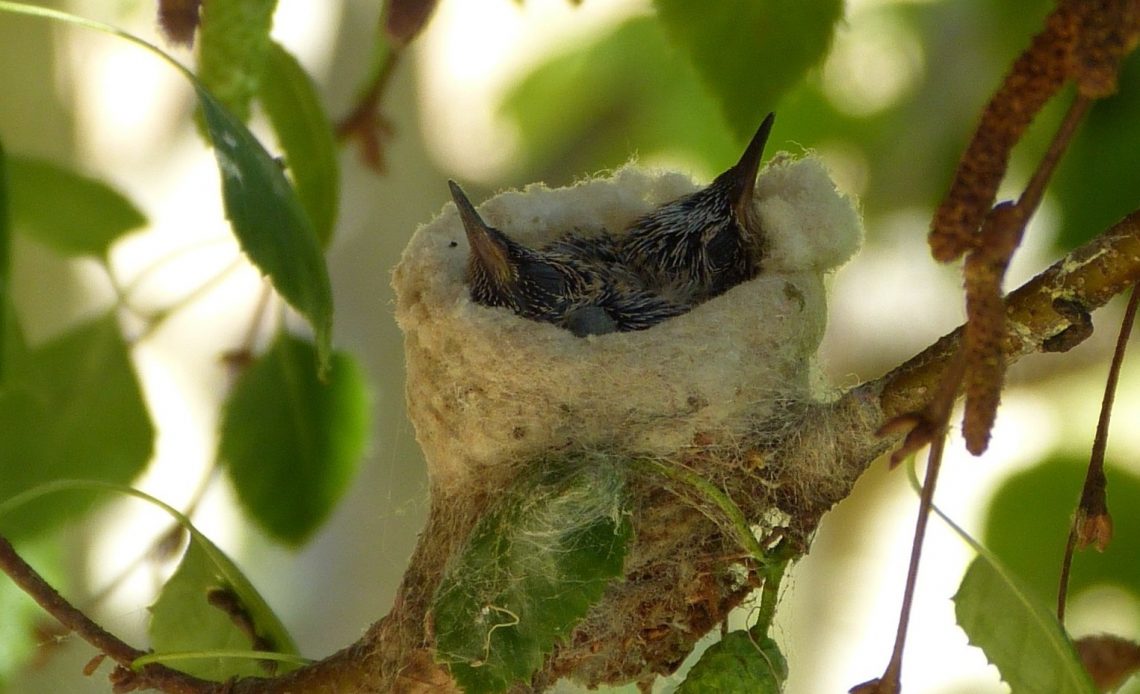

We’re here to help! Wild Yards is a completely free website that is 100% dedicated to helping you create a wildlife-friendly, sustainable yard. Read more
WildYards is reader-supported. When you buy a product through a link on our site, we may earn a comission. Every product is independently selected by our (obsessive) editors and our reviews are unbiased and objective. Read more about our mission or our privacy policy.
Hummingbirds are already tiny as adults – but have you ever seen baby hummingbirds before? Though rare to spot outside the nest, these beautiful creatures are just as fascinating during their youth as they are at maturity.
In this guide, we’ll cover everything you need to know about baby hummingbirds – from what they look like, to how they feed, and what to do if you find one in your garden.
What do baby hummingbirds look like?
Baby hummingbirds are tiny – they measure less than an inch long and have no feathers. Typically, a baby hummingbird will weigh less than 0.03 oz – they’re the world’s smallest chicks. They are normally pink or gray and cannot stand on their own.
It doesn’t take long for hummingbird babies to grow, as they typically reach double their birth size by a week old. During this time, they’ll also grow enough feathers to cover the whole of their bodies.
Interestingly, hummingbirds are born completely blind. They won’t start to open their eyes until they are around two weeks old, which is also when they’ll typically have full pin plumage. It may take up to three weeks for their feathers to appear completely.
Until baby hummingbirds produce their own feathers to warm up in the cold, they depend on their mother for warmth. Multiple eggs hatching at once will also provide extra body heat in the nest.
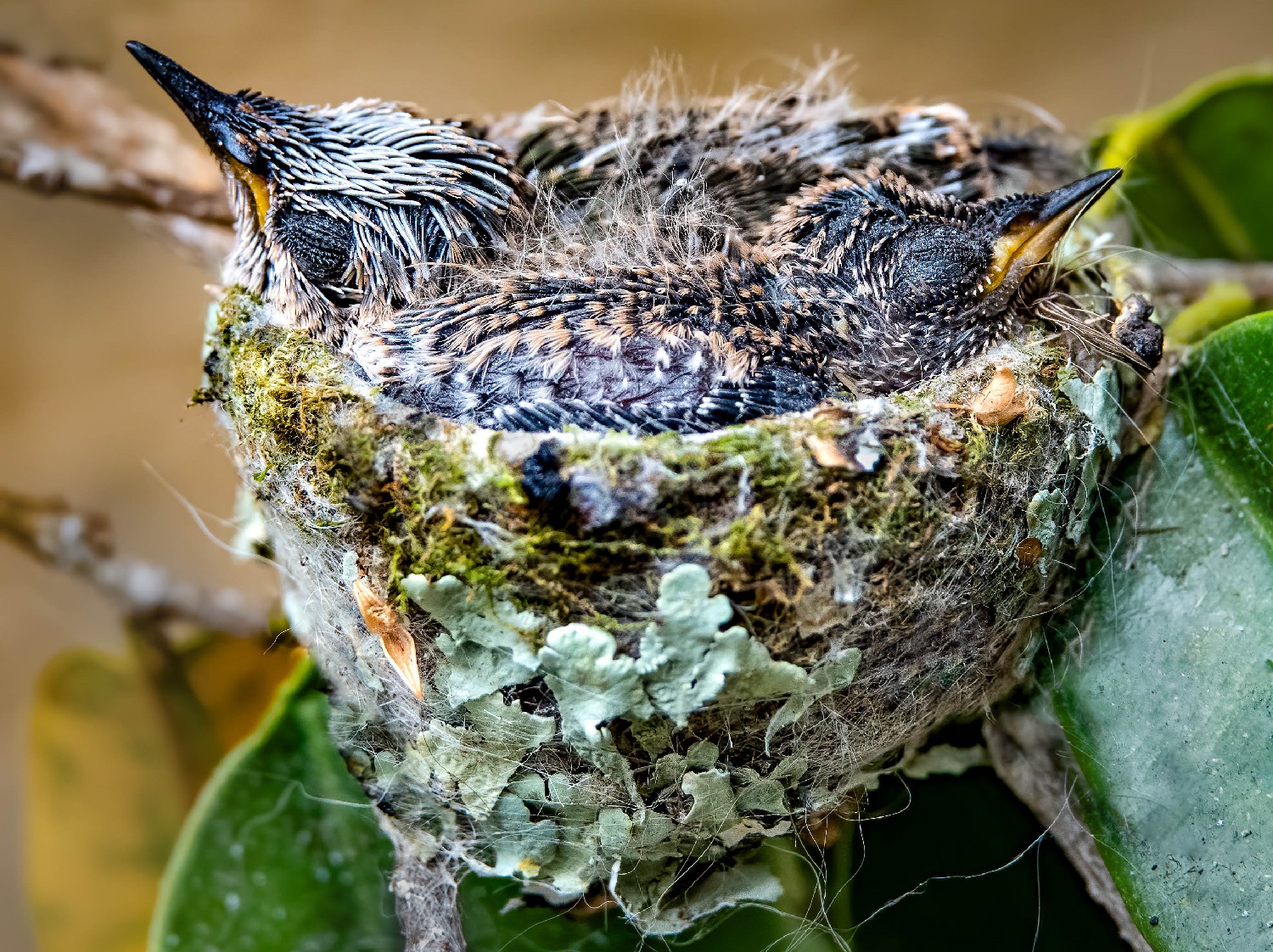
What’s the correct term for a ‘baby’ hummingbird?
The word ‘baby’ is rarely used to describe young hummingbirds in ornithology, with the preferred terms being chick or nestling. Some may also refer to young birds as hatchlings, though they will ‘grow out’ of these names once they leave the nest.
Is it rare to see baby hummingbirds?
It’s unlikely you will be able to tell a young hummingbird from a mature specimen, as babies tend to look similar to fully-grown females after flying from the nest.
You’re unlikely to see a hummingbird chick unless you look for their nests. They’ll reside here until they have full plumage and can fly.
What do baby hummingbirds usually eat?
Baby hummingbirds depend entirely on regurgitated food from their mothers during the first two weeks of life. Most of this will consist of nectar and insects yet to be fully digested. This helps to ensure chicks receive a balance of calories, sugar, and essential protein from caterpillars, flies, mosquitoes, aphids, and more.
By the time hummingbird chicks reach two weeks old, they will typically be able to eat solid food on their own. This is when mom will deliver raw insects whole for them to consume.
Hummingbird chicks can’t survive on nectar alone (and neither can adults, for that matter). As babies, these birds need protein-rich diets to grow strong enough to leave the nest independently.
Beyond this, hummingbirds need to feed constantly to avoid entering states of torpor. Baby hummingbirds are just as demanding as adults in this regard, generally needing a feed every 20 minutes.
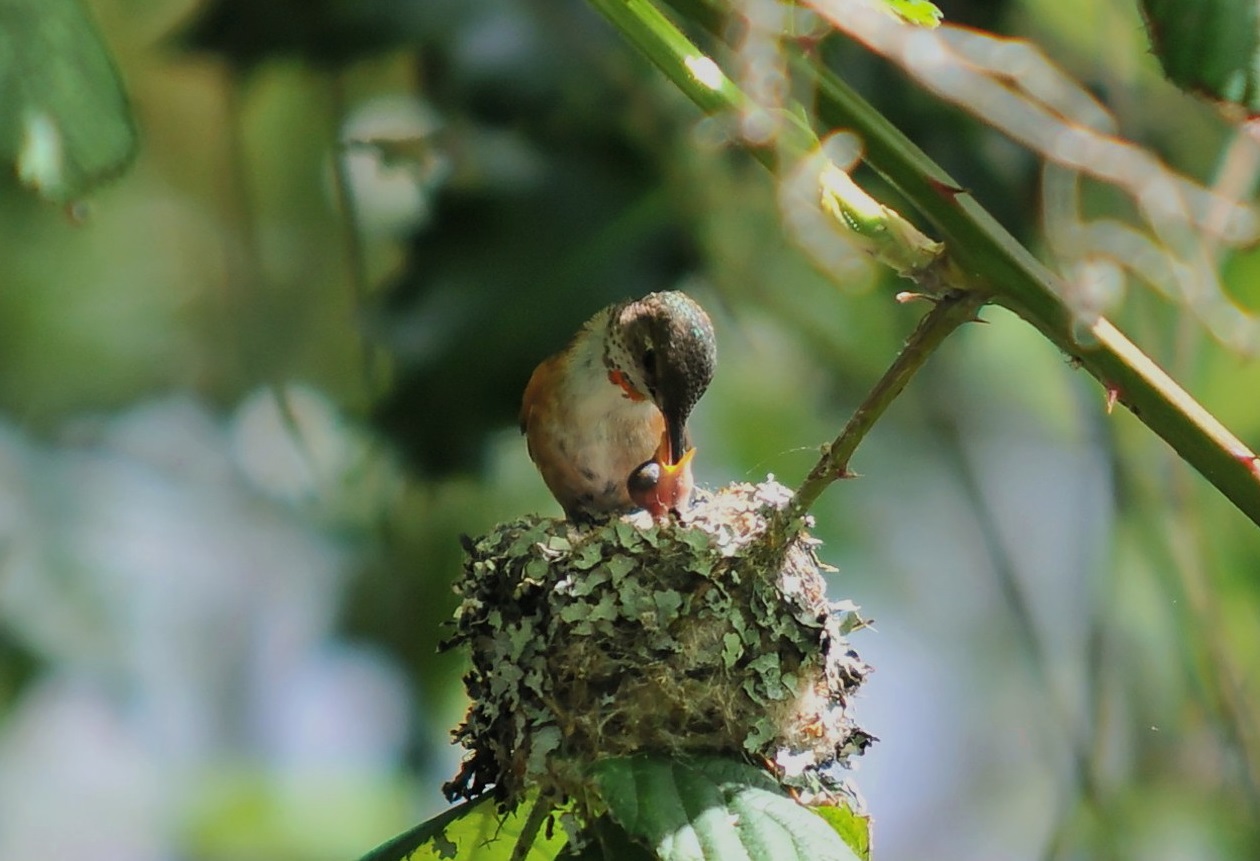
When will baby hummingbirds fly the nest?
Typically, hummingbird chicks can fly within the first month of their lives. As little as two weeks old, they’ll already start practicing flapping their wings in preparation for leaving the nest. They’ll use this period to train by stretching and gripping the nest floor with their feet, testing their potential to flap.
It will generally take between a month to two months for most hummingbird species to gain complete independence and head out on their own. Of all species, tropical specimens can take longer than most to fly their nests for good.
Hummingbirds mature exceptionally quickly. Most species will normally be breeding families of their own within a year of flying the nest.
Do baby hummingbirds ever return to their nests?
Hummingbird chicks never fly back to their nests once they’ve left, though hummingbird mothers will still provide their young with support for a few days.
Upon flying the nest, hummingbird mothers may show their young where to look for the best nectar and insect protein sources. This usually takes place over several days, by which point the young hummingbirds will gain enough confidence to start hunting and feeding on their own – they’re now officially ‘adults’!
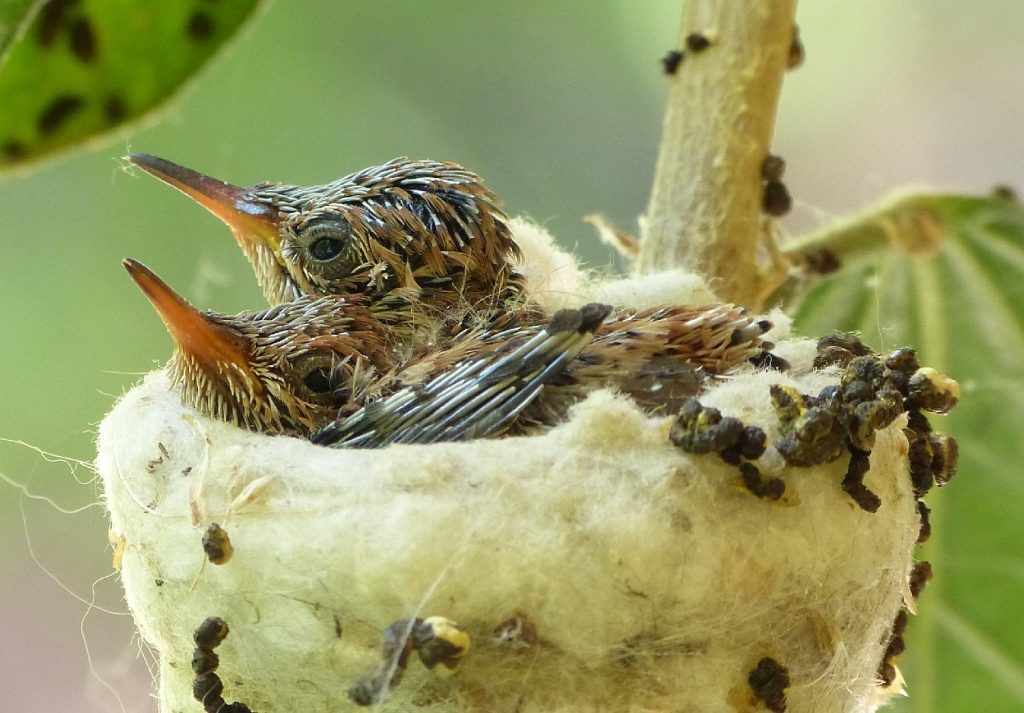
Will hummingbird mothers look after abandoned chicks?
It’s not unheard of for female hummingbirds to assume the role of a mother if they find baby hummingbirds abandoned in nests. Tragically, it may be that birth mothers are attacked and killed during their short trips away from their nests.
Hummingbirds will only ever take over as ‘adoptive’ parents if they find abandoned nests near where they have set up their own. This behavior may not stretch to actively warming eggs but they will help with feeding and training chicks post-hatching.
What exactly do hummingbird eggs look like?
Hummingbird eggs are oval and usually white-colored – but their size sets these eggs apart from other birds. On average, a hummingbird egg will be no larger than a jellybean!
Not all hummingbird eggs are the same size, shape, or hue. For example, the giant hummingbird, or Patagona gigas, lays much larger eggs than most species (for obvious reasons!). The smallest species in the world, the bee hummingbird (Mellisuga helenae), lays eggs around the size of coffee beans! These are the smallest bird eggs laid in the world.
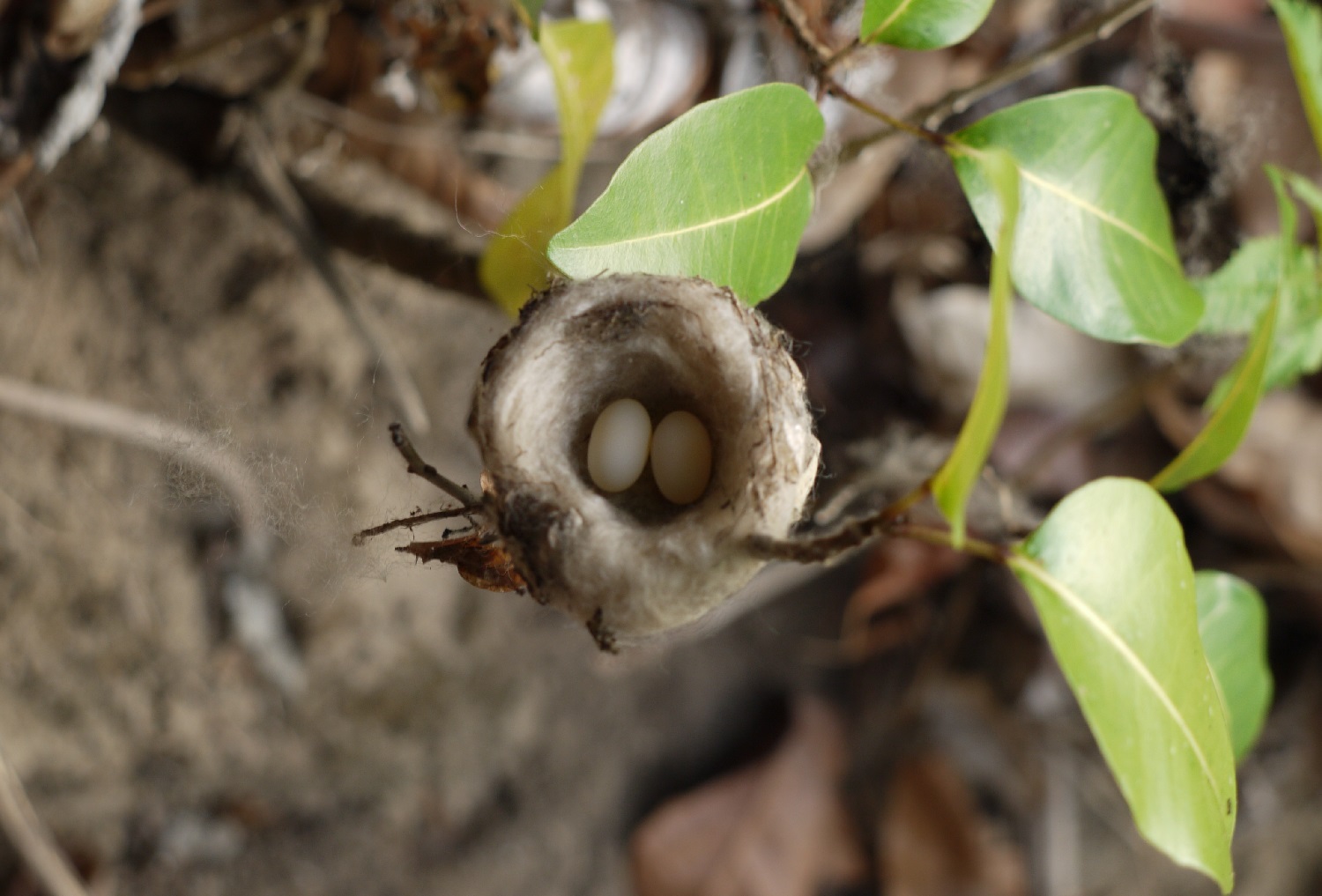
What’s the hatching time for a hummingbird egg?
You can expect a hummingbird to hatch from its egg within 18 days of being laid. However, they sometimes emerge much quicker from their shells, in a little under two weeks. Hatching times can vary from species to species and can also depend entirely on their environmental conditions.
For example, hummingbird moms must keep their eggs consistently warm to expect their chicks to hatch at all – much like many other bird species. Specifically, hummingbird eggs need to be kept at 96 degrees Fahrenheit to hatch healthily. This means the mother bird will rarely leave the nest – at most, only for two or three minutes here and there – to find food she can regurgitate to her young.
Despite being frail and unable to see, baby hummingbirds can readily peck their way out of eggs when it’s time to emerge. This is thanks to a small ‘hook’ on their beaks that is purely for this purpose. Once fully grown, hummingbirds will never use their beaks to peck again – they are much too fragile for this purpose! Hummingbirds rarely open their beaks after childhood, too.
Hummingbird moms are highly efficient and meticulous regarding eggshell waste (as well as poop left behind by their young). They will typically dispose of waste over the side of the nest as soon as it arises.
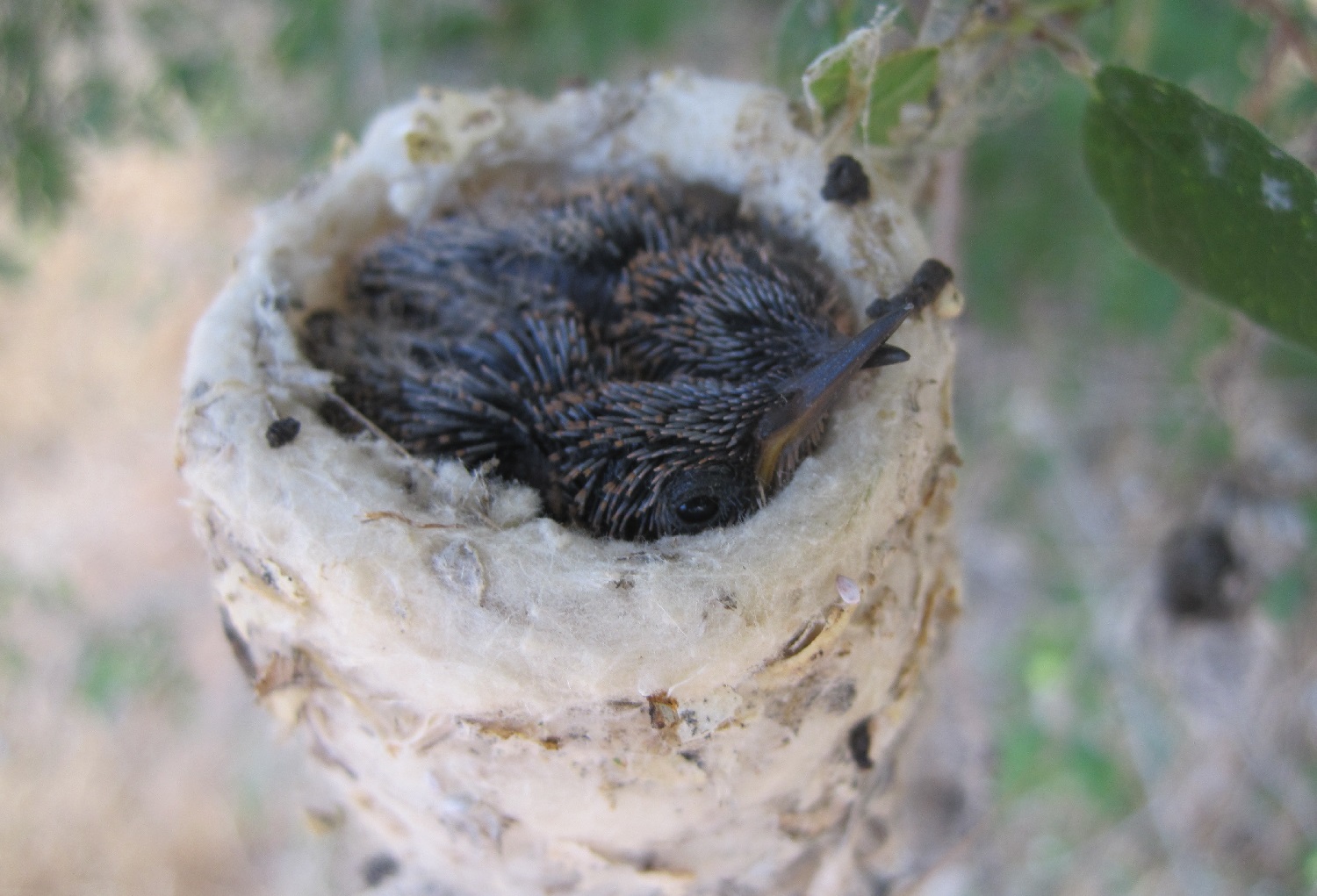
When do hummingbirds lay their eggs?
The laying season for hummingbirds will vary depending on the species, time of year, and climate. On average, most hummingbird species in the US will start laying eggs early to mid-spring. In some cases, mothers may decide to lay into the fall and even as early as late winter if the weather is temperate enough. Non-migratory species, such as the Allen hummingbird, may choose to lay in November – a home-bound hummingbird is less fixed when she can produce clutches.
Hummingbirds that migrate will also generally start laying eggs within a week of finding their new homes, depending on where they head.
Do male hummingbirds play a role in raising babies?
Hummingbird parents don’t mate for life, and typically, the female of the species will shoulder raising young on her own. That means she’s responsible for building nests, keeping eggs warm, and feeding her chicks with regurgitated nectar and insects.
Female hummingbirds are territorial of their nests, much like the males of the species are defensive of food. Female hummers will readily ward off any would-be predators as best they can!
It may be that females chase males away from nests as their bright colors might attract predators – though more research into this phenomenon is needed.
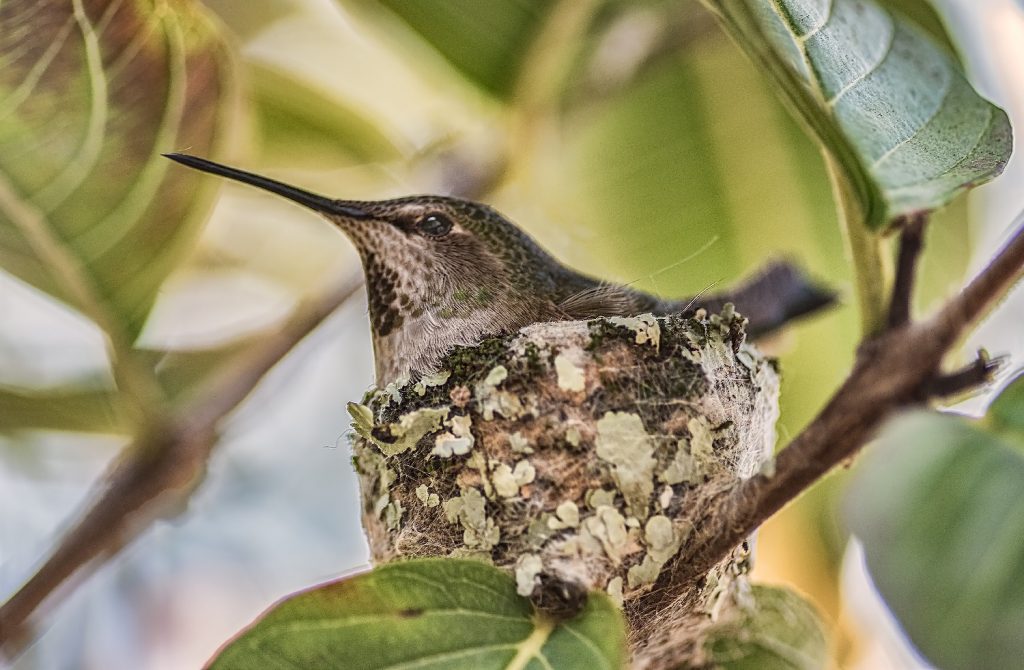
How many eggs will a hummingbird normally lay?
Hummingbirds will lay no more than three eggs in one ‘clutch’, or group. This laying can be spread apart by a day or two. Typically, the average hummingbird will lay just two eggs in a single clutch, though they can lay up to 12 eggs in their lifetime. One hummingbird may expect to lay up to five different clutches in a single season.
Ruby-throated hummingbirds, for example, will generally lay two eggs – though in rare cases, a bird may lay a single egg in one clutch.
Hummingbirds lay small numbers of eggs in the name of preventing predator attacks. The fewer eggs they lay, the less obvious their clutches will be to roaming mammals and other birds looking for quick snacks.
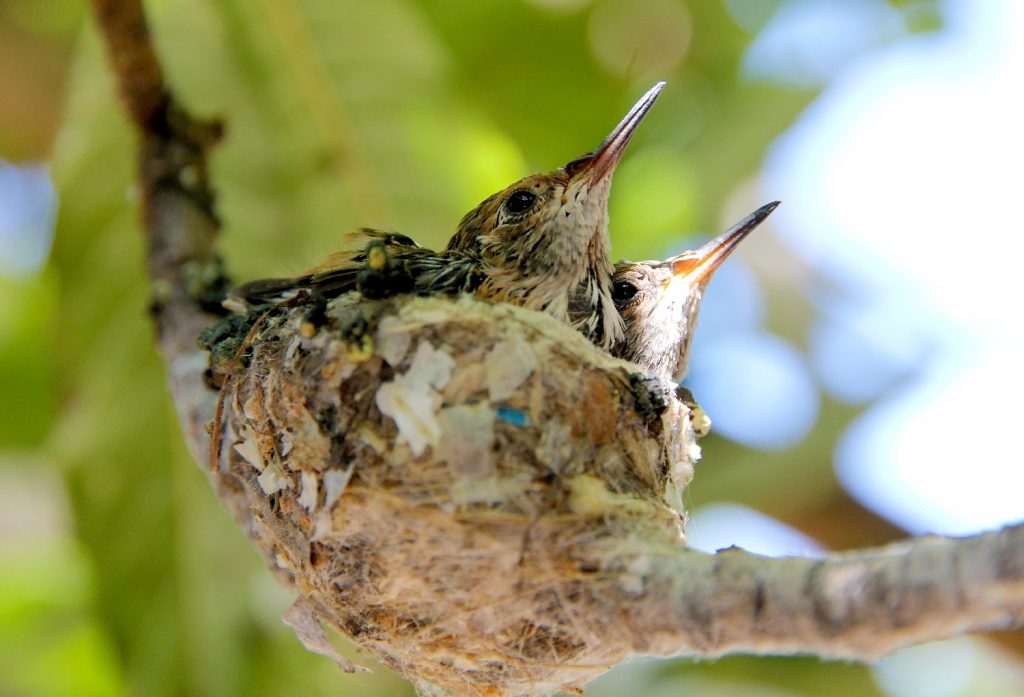
Where do hummingbirds build their nests?
Hummingbirds tend to build nests in spots where they’re covered by ample shade and foliage. This means you’re likely to find hummingbird nests in the branches of tall trees and even tucked away in thick shrubs. This is all to keep baby hummingbirds safe from predators and ensure they are amply protected by harsh weather.
Hummingbird mothers also take the time to find spots that are close to reliable nectar sources. If you grow plenty of plants and flowers that attract hummingbirds, you may find that they choose to nest within your yard, if not close to it. Alternatively, it’s worth setting up a hummingbird feeder to ensure that mom always has a dependable source of nutrition she can regurgitate to her chicks.
Hummingbirds will nest close to sources of insect activity, too, so that they can source protein to provide to their young. They can nest in the strangest of places and prefer tight, covered nooks – which means you may find them nesting in artificial structures and on the sides of buildings if there’s plenty of food nearby.
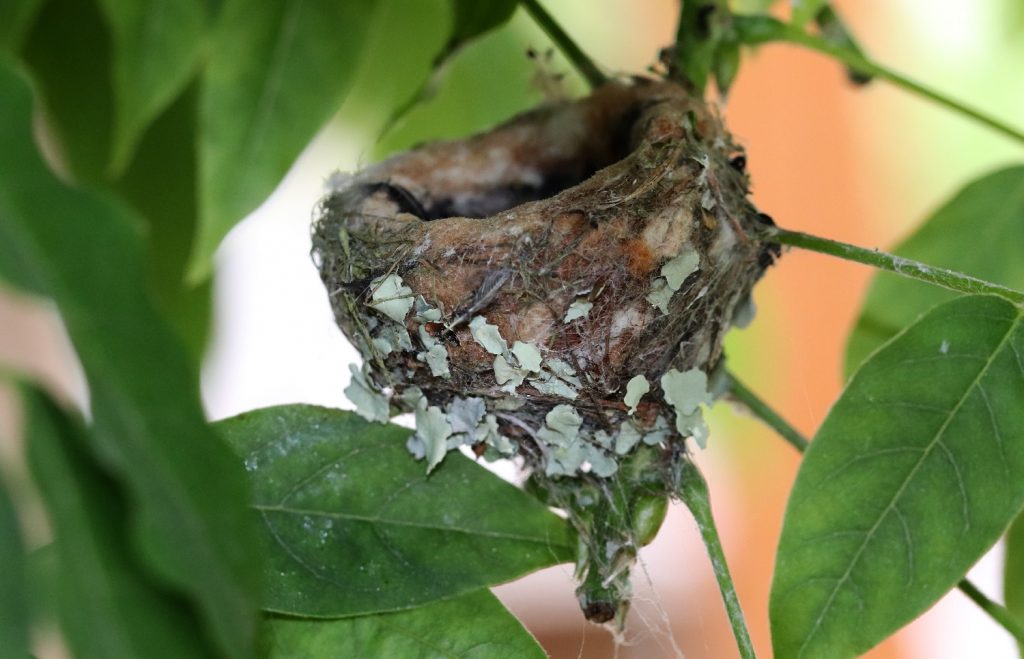
How do hummingbirds build nests for their babies?
Hummingbirds build their nests from leaves, plant residues, and spider webs. Web silk comes in amazingly handy to provide elasticity, accommodating growing chicks. Hummingbird moms will usually attach their nests to branches or shrubs with these webs to ensure they hold securely.
Hummingbirds will also insulate their nests with thistles and soft plants to help keep their chicks warm. Intriguingly, hummingbird mothers will also camouflage their nests to ward off predators – they tend to use lichen, for example, to help hide their chicks from would-be intruders.
It’ll take less than seven days for a hummingbird to build her nest, but these domiciles aren’t built to last. Once chicks have flown the nest, they are often abandoned, meaning the mom will need to create a new nesting spot the next time she’s due to lay a clutch. It’s not unheard of for a nest to get reused – but it’s rare – as predators may learn the location, and their relatively flimsy structures may not survive the seasons to come.
I think I’ve found a baby hummingbird – what should I do?
If you think you’ve found a baby hummingbird that’s fallen out of its nest, look carefully to see if its nest is close by. It may be that a mother has abandoned the nest, or it may have been damaged in heavy weather.
If it is safe and easy to do so, and you find the nest you believe the baby has fallen from, be careful to pick up and carry the chick back to its home. This is not always a good course of action, as hummingbird chicks are extremely frail – you may cause injury without meaning to.
The best action – especially if you find an abandoned hummingbird in the wild – is to call a local wildlife rehabilitator. You’ll find a list of resources you can call here.
Hummingbirds are fragile yet fascinating – and that goes for their chicks, too! Baby hummingbirds need protection for up to a month before exploring the wild and wonderful world around them. If you spot what you think is a hummingbird nest in your garden, it’s best to leave it alone – mom knows what she’s doing, and chicks will be ready to roam around your garden within a few weeks.
Start preparing your garden for them with lots of beautiful flowers and by topping up your feeder!

Thanks guys. Your article has given me the answer for ” How Do Hummingbirds Feed Their Young?”. Newborn hummingbirds depend on their mother for nutrition and feeding. I always wonder that how they do that. Now I has known.